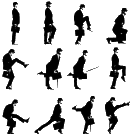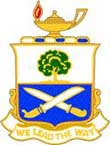SouthernAP
Posts: 40
Joined: 2/11/2004
From: Haze Grey and Underway
Status: offline

|
quote:
ORIGINAL: Big B
And for all those who think of the casualties that may have been inflicted on the invading American Armies - I submit that everyone should reflect on the comparative casualties between the ETO and the PTO...there is no comparison. Eisenhower lost more men in a month in the 'Battle of the Bulge' than MacArthur lost in the entire Pacific War....as many Americans died and were wounded taking San Pietro in 5 days in Dec 1943 (just to batter their way into the Liri Valley...not to mention taking Monte Cassino) than Guadalcanal cost in 6 months, as many men died in two nights trying to cross the Rapido River in Italy in Jan 1944 as died taking Tarawa. In short, the price paid in the MTO-ETO was Always vastly higher than paid in the PTO...but it did not deter the Allies, and remember - that was the same war and the same price tag as willing to be paid. In short, the Germans were far more capable of inflicting casualties on the Allies than the Japanese were, yet that did not save the Germans.
my 2c.
B
You are comparing two different types of combat though. In combat in the ETO you had whole massed corps and armies in almost continuous contact with each other from 1943 (when the landings made on main land Italy) till May of 1945. The armies were constantly probing each other maneuvering and attacking each other head on almost constant basis from the minute the troops hit the beaches until the end of the war. The only respite for the troops was being withdrawn to a secure area with in a day's truck ride to refitting. They would have been replaced by fresher troops who only just landed or just finished their own refit. While in the Pacific even including the operations out of India back into Burma and the South East Asia only really saw regiments or divisions were committed piecemeal against each other for a short period of time. Then it was packaged up to ship back to a forward operating base, refit, and go out do it again on a new battle; all the while another division or regiment was being shipped out to attack another target to gain another forward operations base. Also remember that the war in the Pacific and CBI one saw that it was easier for the Allies to strike at spots where the Japanese were perceived to be weaker. While in Europe even though there was attempts out maneuver each other, it still happened that both sides struck each other almost head on. Even attempts (Anzio and Market Garden to name only two) by the allies to maneuver around the front of the German Army lead only to an easy switch of forces by the Germans to face that flank and turn the front.
Going back on topic I had to read a book titled "I Saw Tokyo Burning" by Robert Guillain while in college and still have the book. Mr. Guillain was a French reporter who was in Japan from the time of Pearl Harbor till the surrender. In his book he reported as he did to his newspaper Le Monde that he both heard and saw civilian men and women being trained into "People's Volunteer Corps". To quote him starting on page 228: quote:
For the time being then, the fight-to-the-finish camp, backed by the public opinion it controlled, was very strong and read if necessary to fight the cabinet openly. Their orders came, as so often in the past, not from the army's official commanders, but from the military bureaus, the young colonels on the general staff and in the War Ministry. Other incendiary slogans came from the kamikaze training schools and army camps. The southern provinces of Japan, long a hotbed of militarism, prepared fanatically for invasion. Agitators from the nationalistic secret societies spread out over the country. Women did no escape conscription; they were finally ensnared by a series of measures-census, labor service, biannual mobilization in the factories they had long struggled to evade. “People’s volunteer crops” were organized everywhere for elementary training in handling weapons and guerrilla combat. Antique Carbines from the Russo-Japanese War, wooden rifles and bamboo spears were about the only arms they had. But they were fed on savage stories of Nazi Wehrwolf exploits before the German Surrender, and they were readied to do even better when the time fame from murder and vengeance against the invaders. . The author goes on for about two more paragraphs describing how both the Imperial Japanese Army Air Force and Imperial Japanese Naval Air Force were making whole classes of fresh recruits into kamikaze pilots and other whole classes into escort pilots. Meanwhile the Japanese Navy were taking classes out of their boot camps and teaching them who to operate Kaiten mini-subs and motorboats and crash either into troops ships or into the waves of landing craft.
According to book, War Plan Orange:The U.S. Strategy to Defeat Japan, 1897-1945 by Edward S. Miller, the last plan adopted by the General Board was basically from allied bases in Taiwan along with island bases in Philippines and Marianas the US Navy would be executing raids against the homelands all the while maintaining a blockade until the Japanese showed the white flag. This is the plan that according to other things that I have read and heard is the plan that Nimitz and King both wanted to hold to. Macarthur and if I remember right Marshall both wanted to abided by the concepts as taught with Clauswitez. That was force a major land battle and so utterly defeats the enemy’s ability to wage a land combat they would be forced to accept surrender. That would mean a landing on the Japanese home land.
Digging around on the internet here is a transcritpt from a class taught about the possibly invasion of Japan is an editor for the US Army's professional journal, Military Review, published by the US Army Commmand and General Staff College, http://www.mtholyoke.edu/acad/intrel/giangrec.htm. He talks about the intelligence failures on the side of the Allies and how documents he found had mentioned the Japanese intelligence seemed to know about how the end game was going to be played with the invasion.
Just my thoughts on the subjects
|
 Printable Version
Printable Version
























 New Messages
New Messages No New Messages
No New Messages Hot Topic w/ New Messages
Hot Topic w/ New Messages Hot Topic w/o New Messages
Hot Topic w/o New Messages Locked w/ New Messages
Locked w/ New Messages Locked w/o New Messages
Locked w/o New Messages Post New Thread
Post New Thread